I’m excited to write about showy tick trefoil (Desmodium canadense). I’ve wanted to feature these plants for at least five years, but I never caught them the right time. Last weekend I was excited to find many plants blooming next to the Dallas County prairie Mike Delaney has been restoring for more than 25 years.
Also known as hoary tick-trefoil or Canada tick-clover, showy tick trefoil is native to most of the U.S. and Canada east of the Rocky Mountains. A wide variety of pollinators visit its flowers or feed on its foliage.
Although showy tick trefoil flowers are beautiful, you may not want to cultivate them in a garden, because its seedpods are notorious for sticking to clothing or animal fur. According to Illinois Wildflowers, this plant’s preferred habitats “include moist to mesic black soil prairies, moist meadows along rivers, borders of lakes, thickets, limestone glades, and areas along railroads where prairie remnants occur.”
Illinois Wildflowers, Minnesota Wildflowers, and the Lady Bird Johnson Wildflower Center are good resources for botanically accurate descriptions of this species’ foliage, flowers, and fruit. Some insects have been feeding on the leaves here.
You can see the fine white hairs on the stem in this photo. Unfortunately, you can also see what I think is a Japanese beetle. Showy tick trefoil is “a preferred food source” for those insects, Illinois Wildflowers writes.
Most plants are two to six feet tall. You can see the range in height here.
The “pea-like flowers” are just starting to open in this shot.
Marla Mertz captured this beautiful picture of showy tick trefoil blooming in Marion County.
Bruce Morrison took the next four pictures on his pasture in O’Brien County (northwest Iowa).
Back to my pictures from Dallas County last weekend. I have rarely seen just a few showy tick trefoil plants. Here’s a small part of the colony.
The Lady Bird Johnson Wildflower Center describes showy tick trefoil seed pods this way: “The distinctively jointed fruits, known as loments, break into 1-seeded segments, that stick to clothes and animal fur, thus facilitating seed dispersal.” You can see fruit forming here. The plant near the center of this picture (with red stems) is a foxglove beardtongue, which bloomed in the spring and has gone to seed.
Another group of showy tick trefoil plants with fruit forming.
In the fall of 2019, I leaned from a walking path at the Neal Smith National Wildlife Refuge to take a picture of a late-blooming partridge pea. Some tick trefoil plant seized the opportunity my fleece jacket presented.

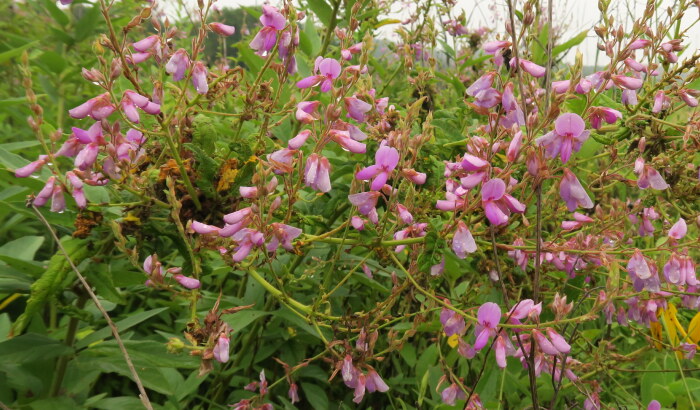
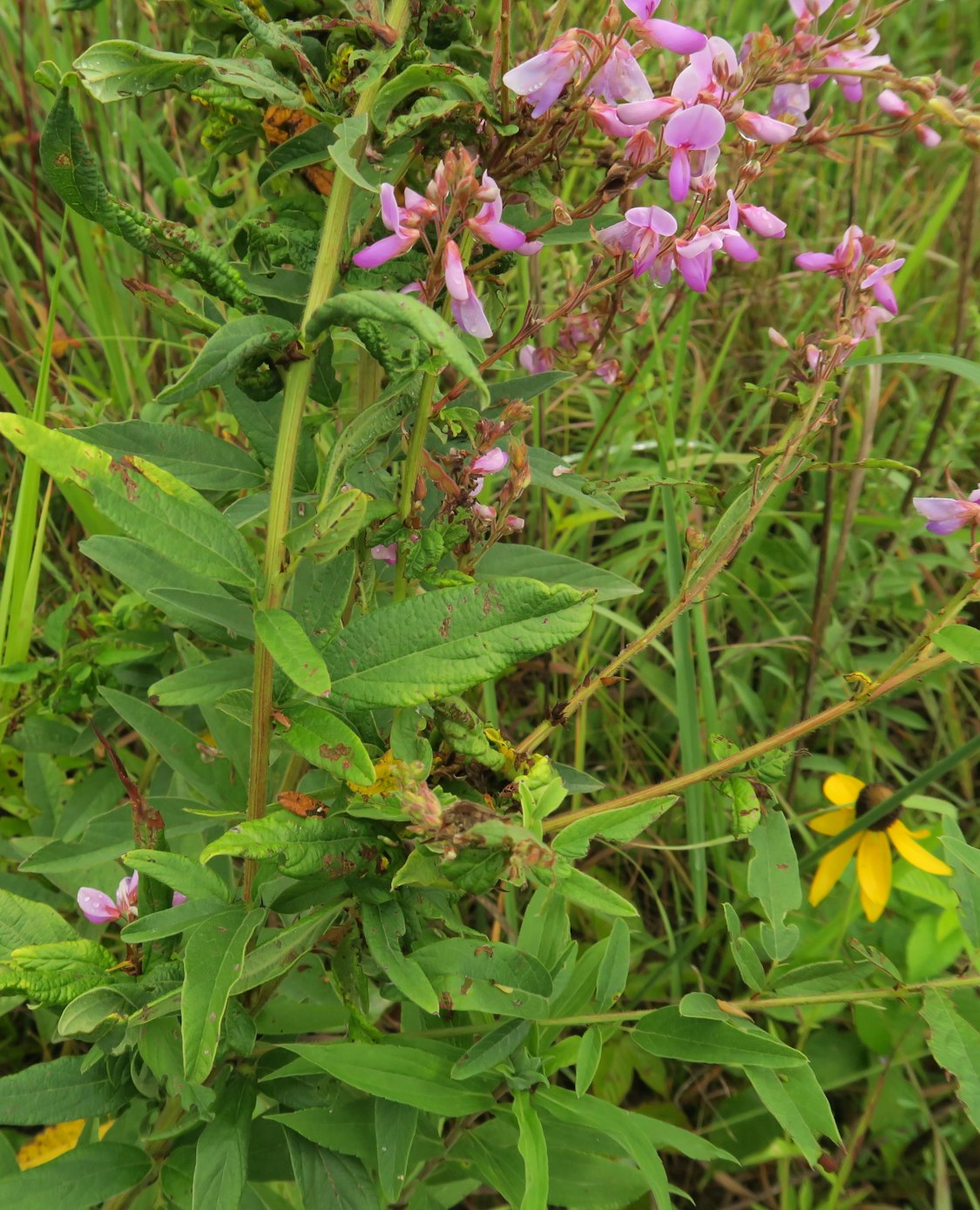
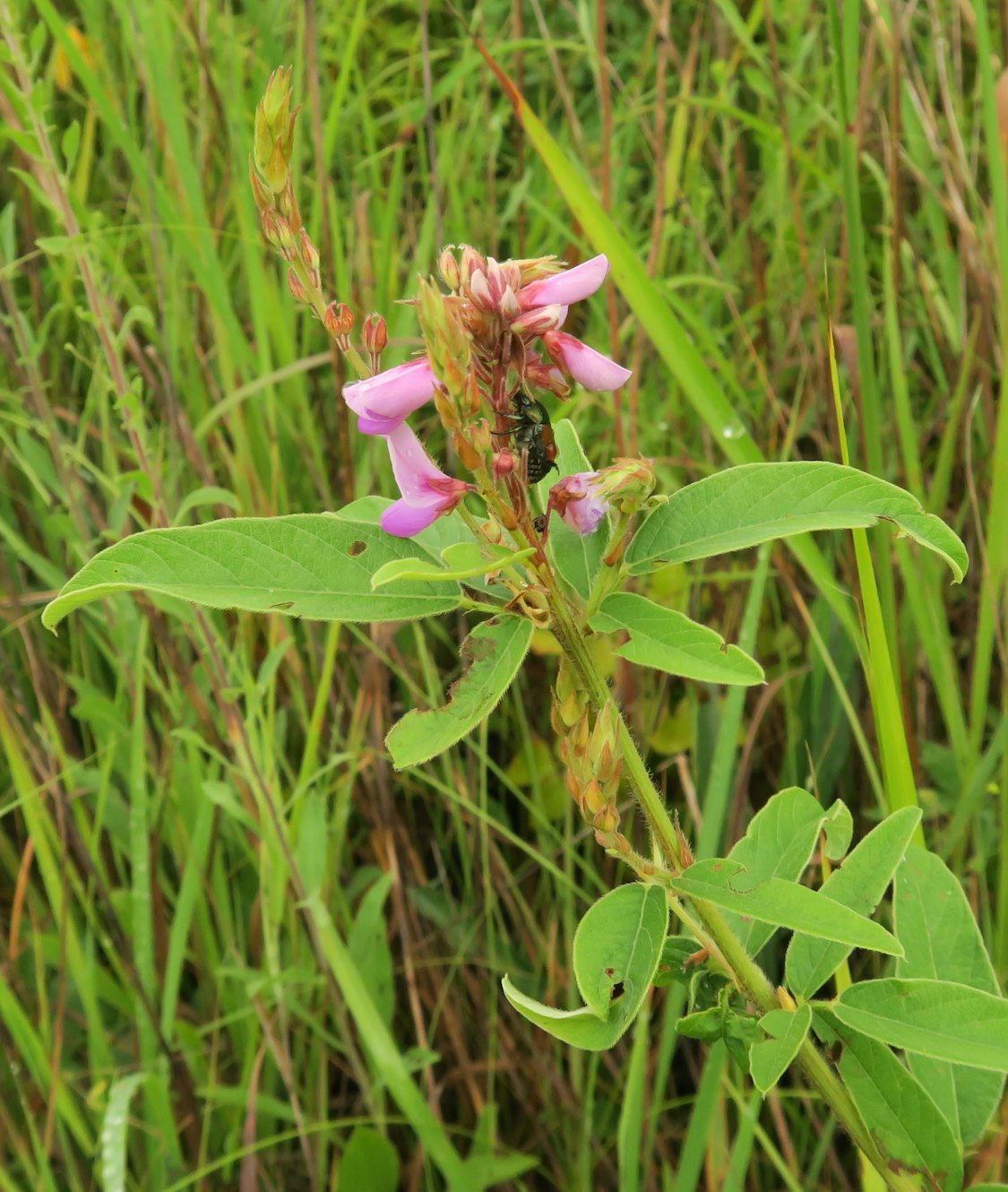
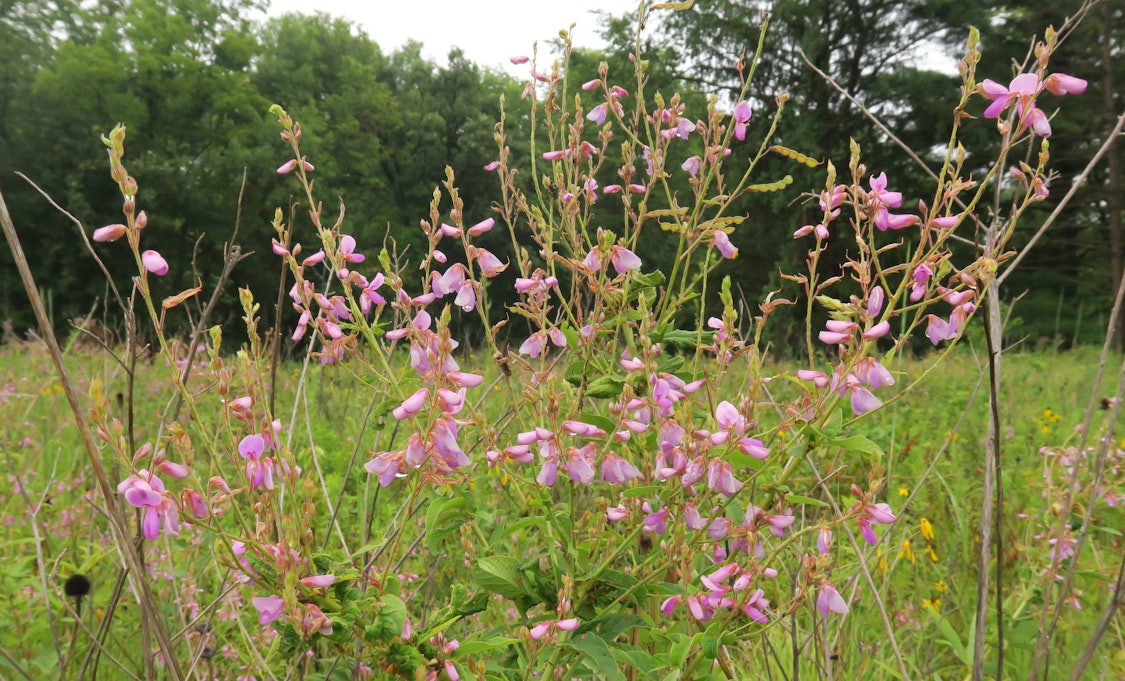
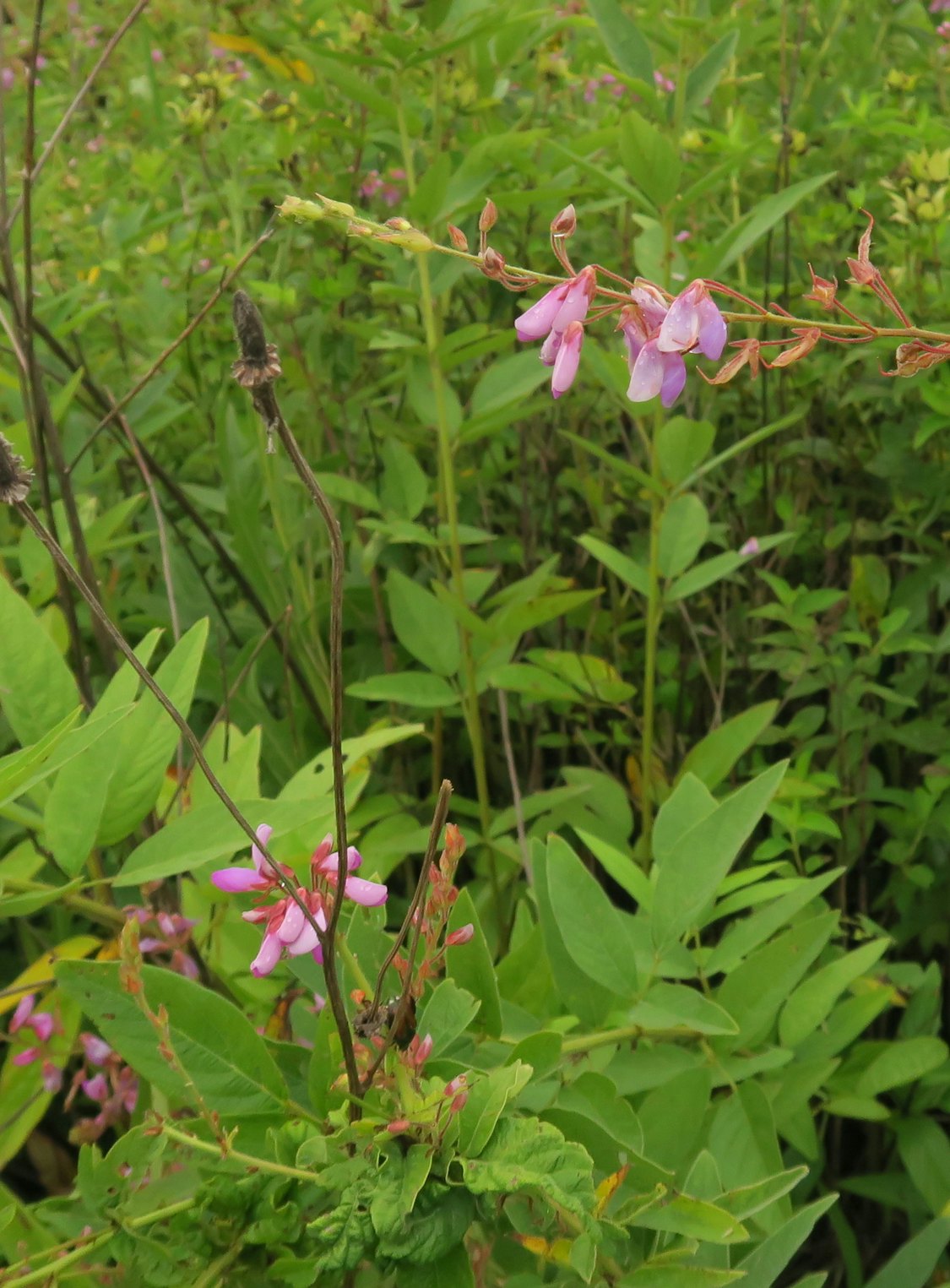
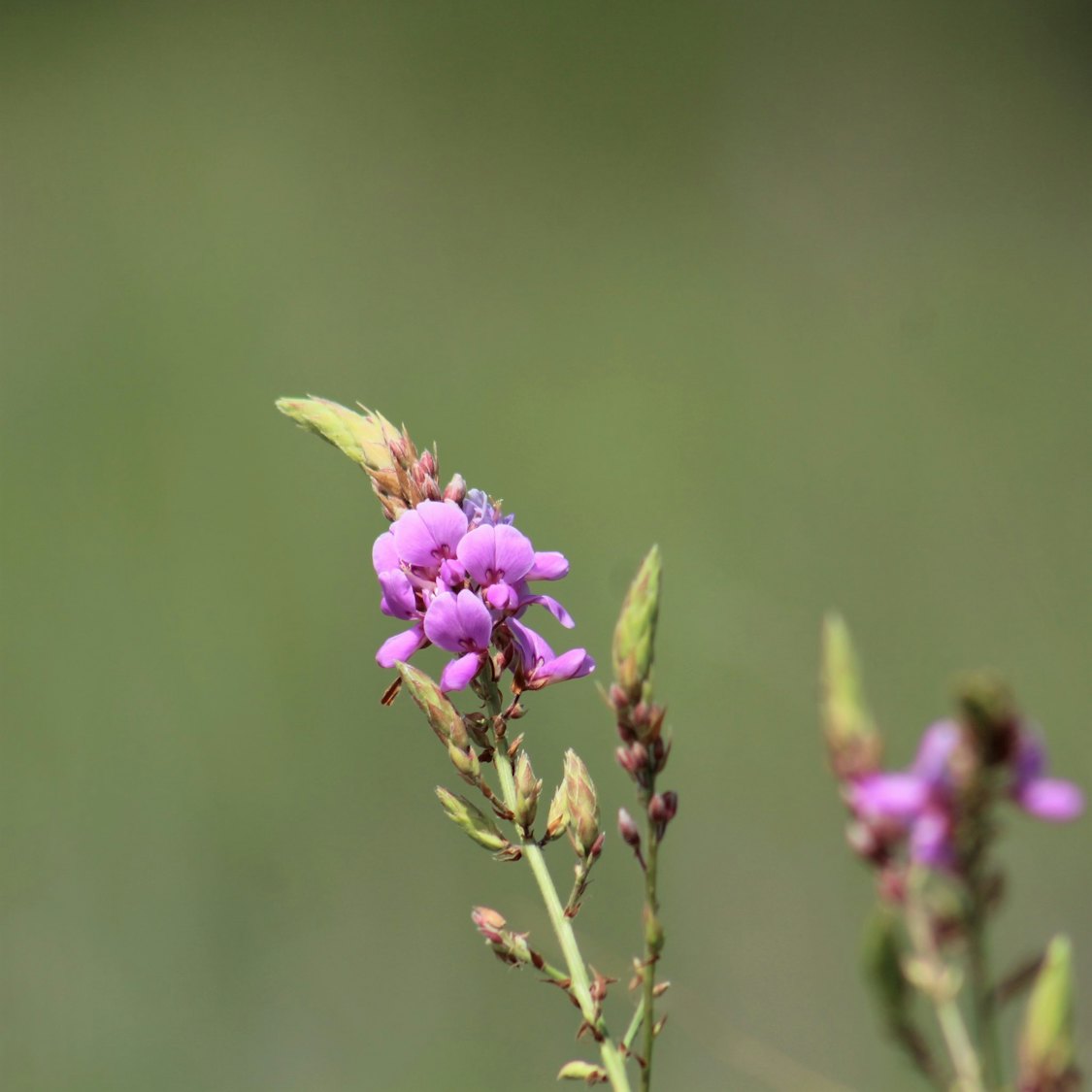
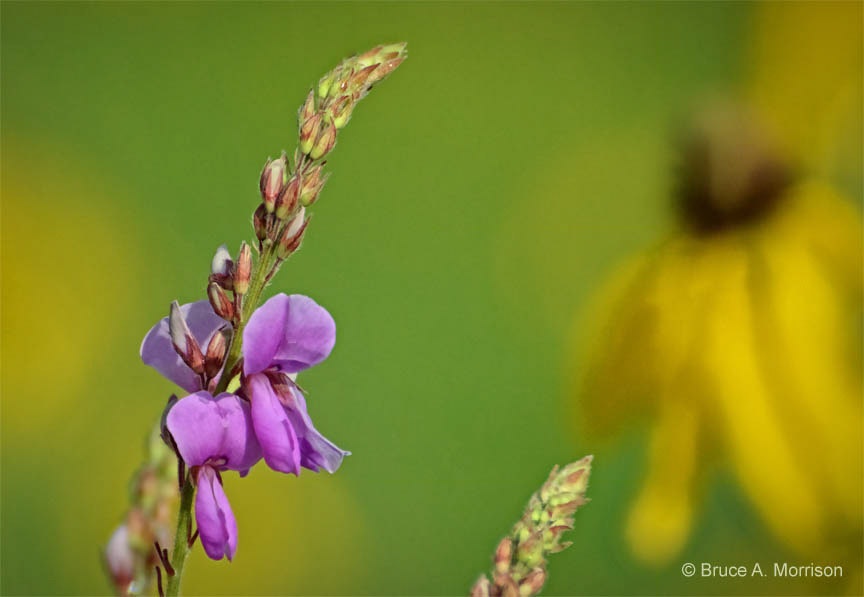
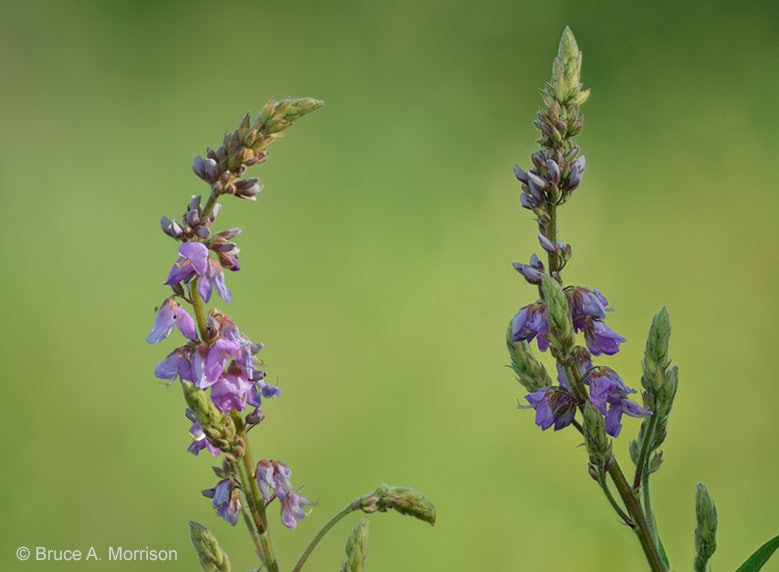
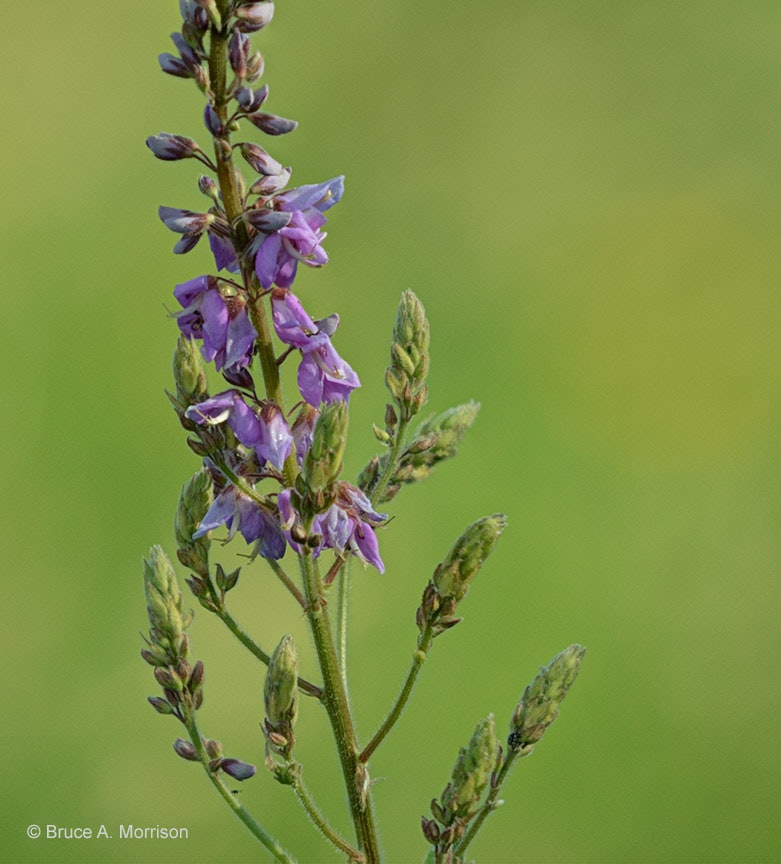
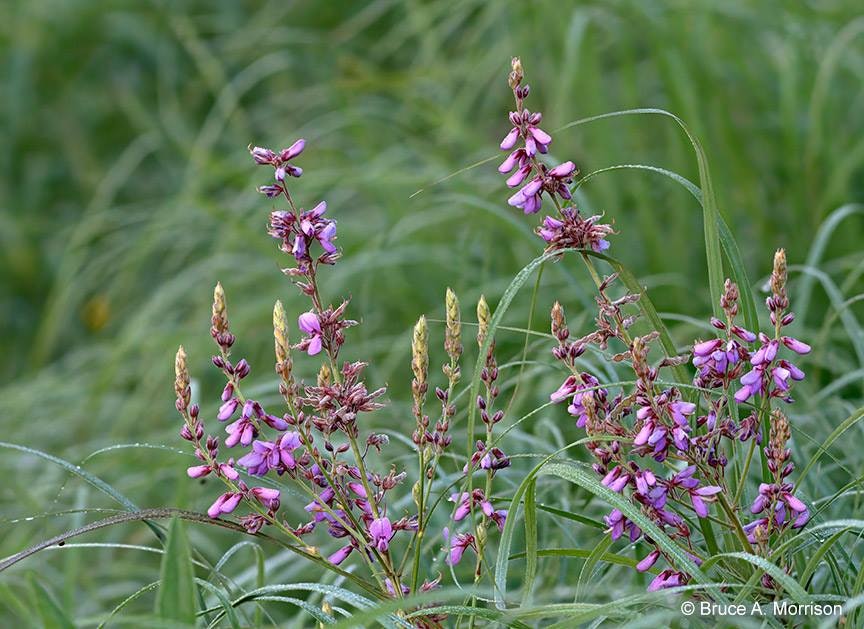
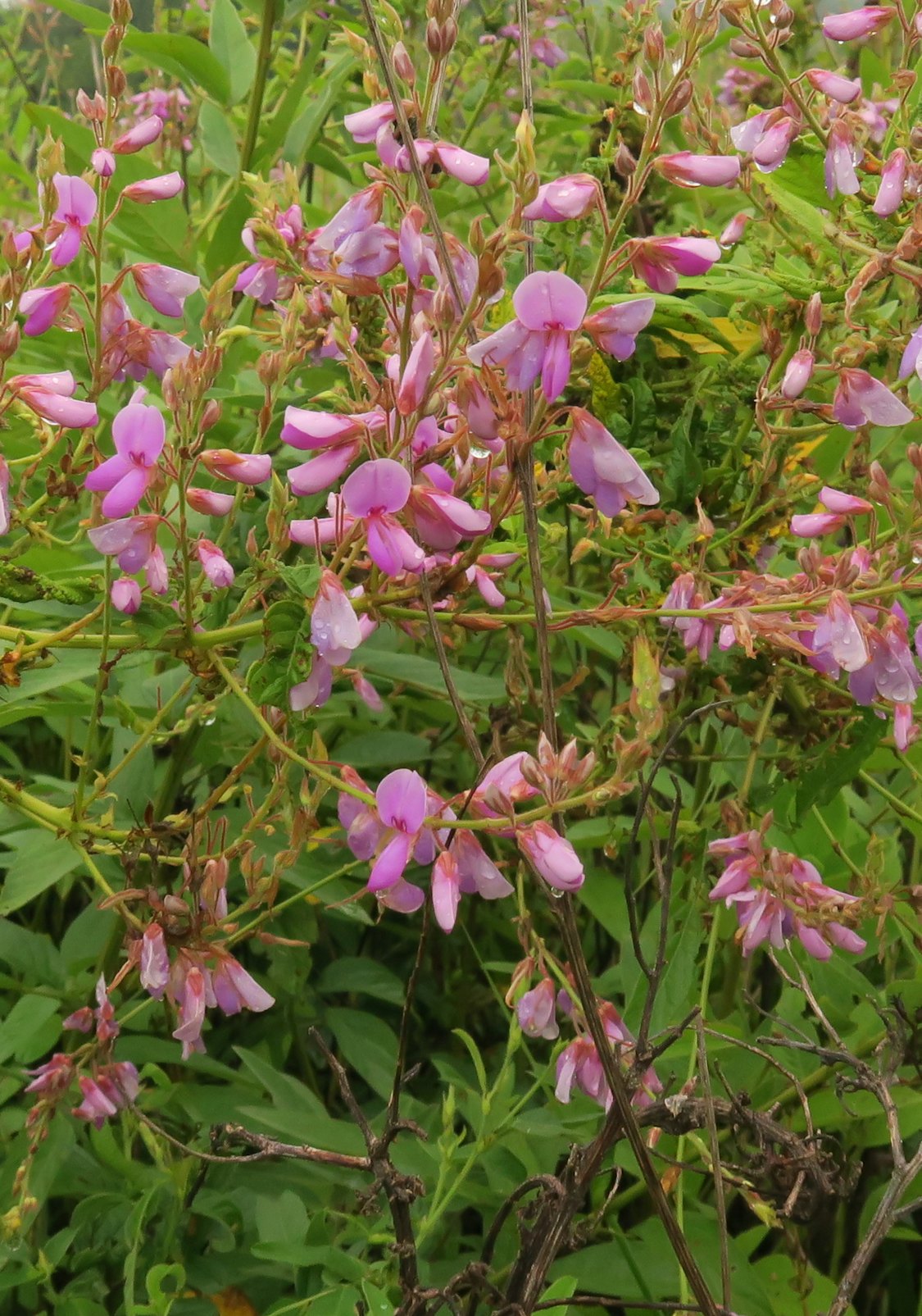
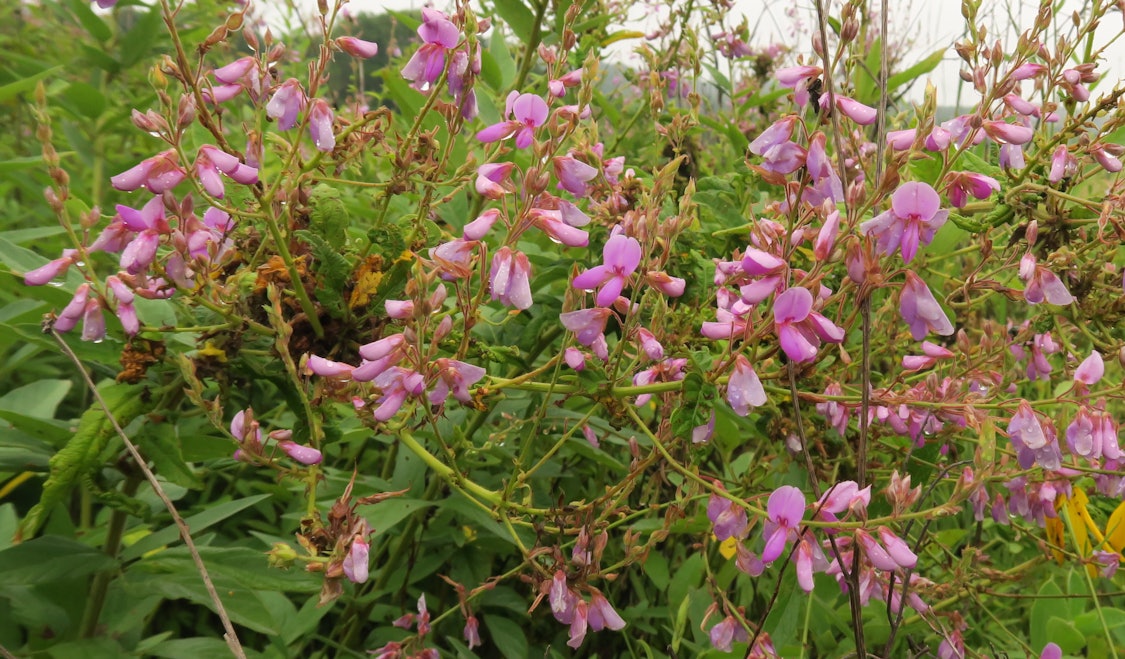
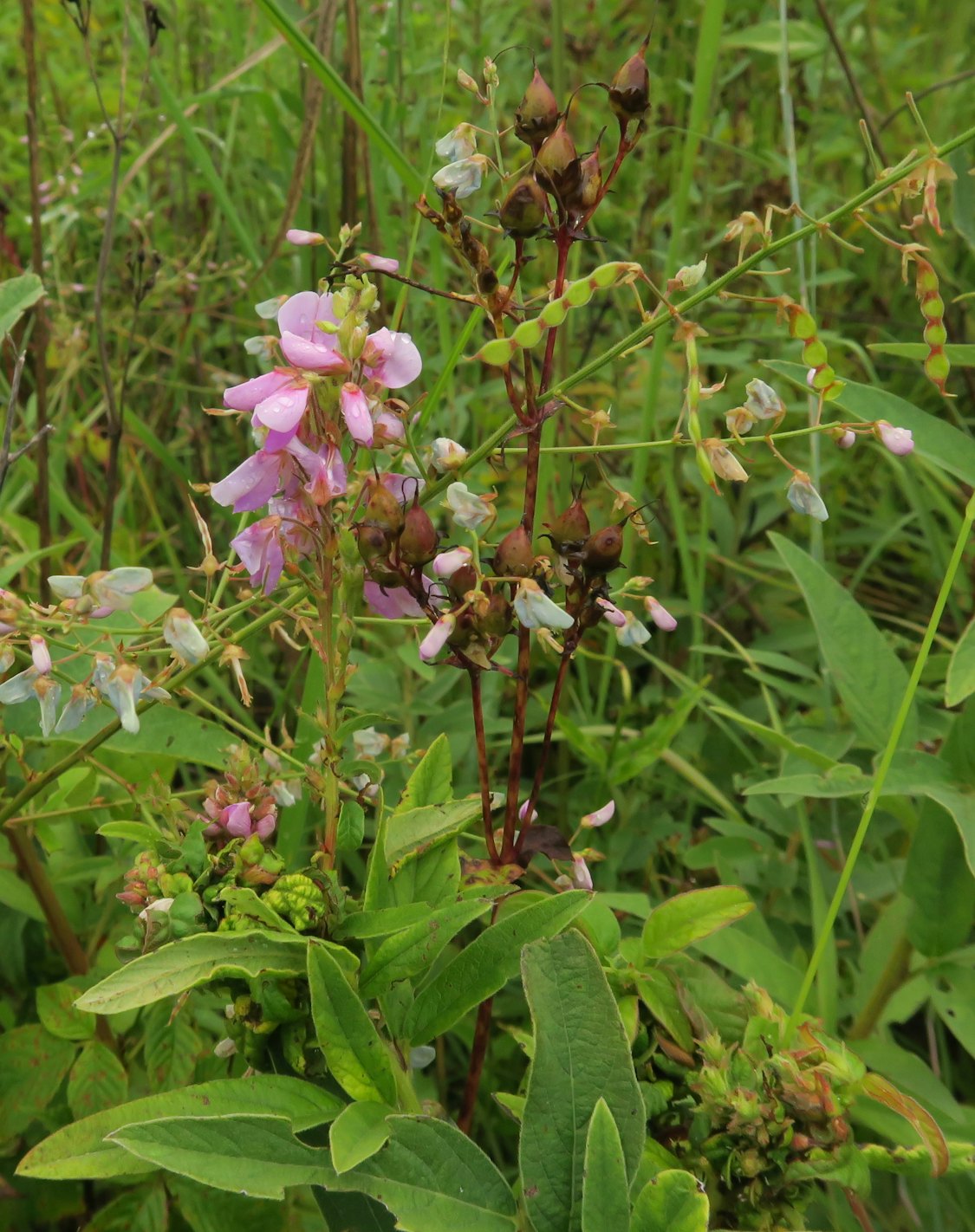
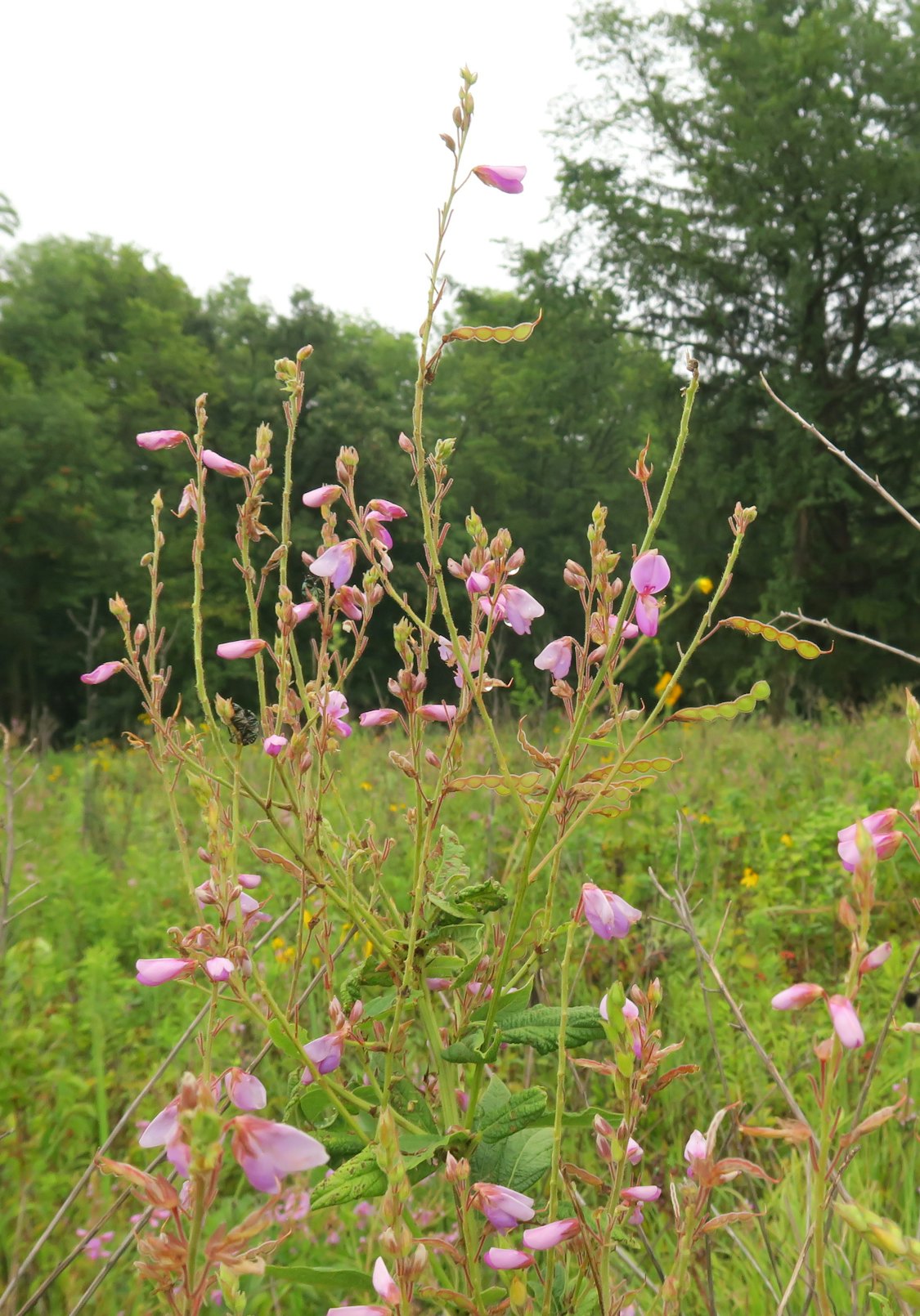
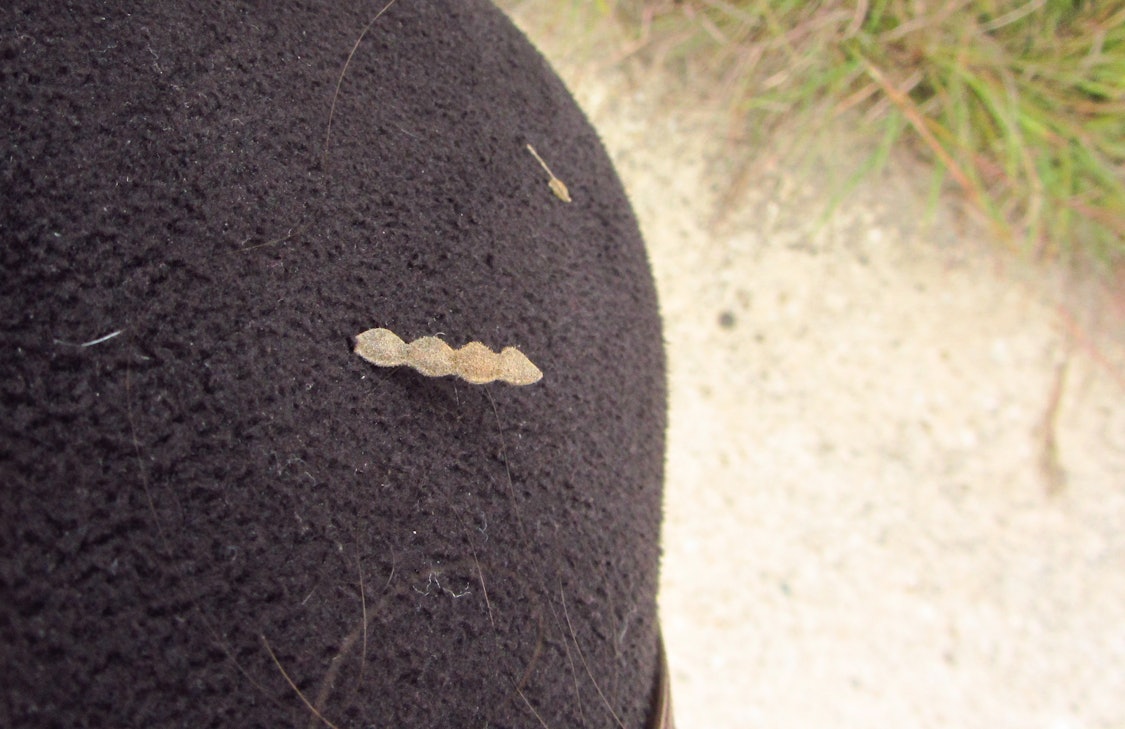
1 Comment
The pink clouds of showy tick-trefoil in local prairies...
…looked more beautiful before Japanese beetles arrived in this part of Iowa. I’m glad I took photos back then.
PrairieFan Tue 10 Aug 1:04 AM